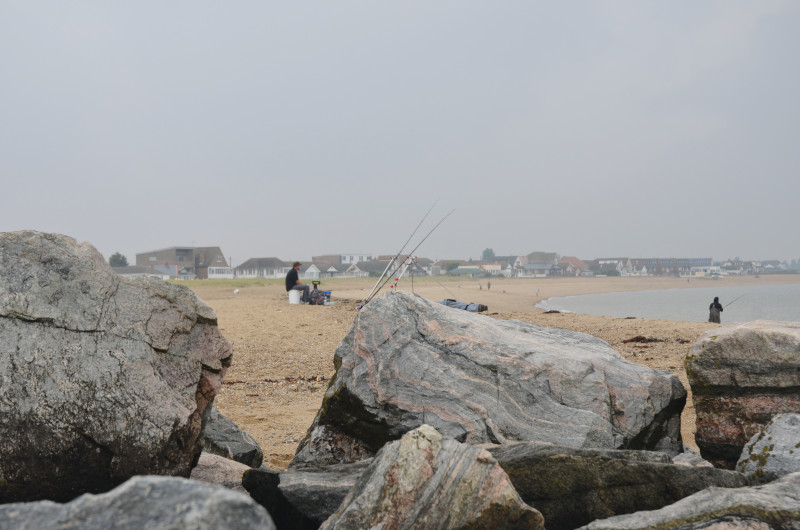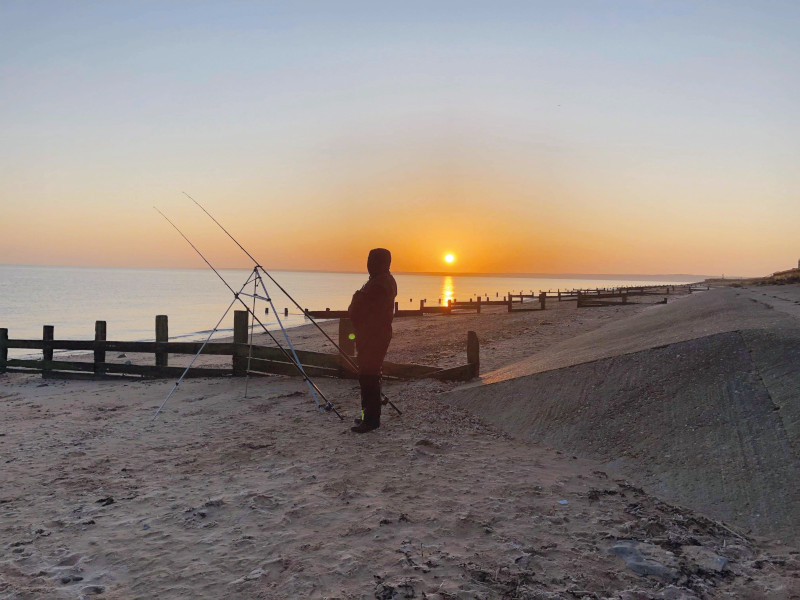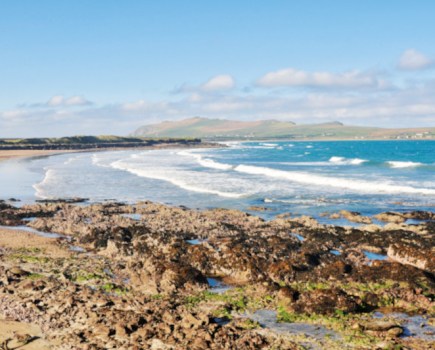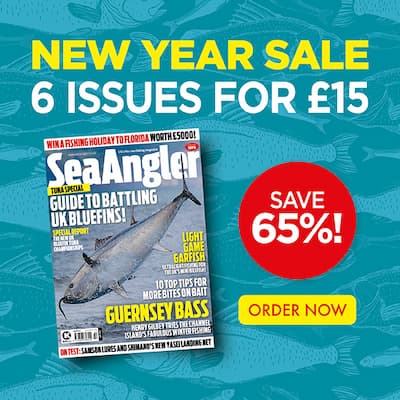Where to go sea fishing near me? This article aims to take you to five great areas on the south-east coast for a great days fishing.
There are hundreds of sea fishing spots and marks on the south-east coast. We’ve picked five to start with, and will add more over time.
If you’ve got a mark that you would like to see added then get in contact with us on our Facebook page we’d love to hear from you.
Sea Fishing near me contents
1) WALTON-ON-THE-NAZE BEACH
A small seaside town in Essex, Walton-on-the-Naze has fairly shallow, flat beaches with wooden and concrete breakwaters.
Fishing is reasonably comfortable from the promenade over high tide, giving you four or five hours of fishing time before the tide drops, then it’s a case of moving.
As you head to the north of the town and the Naze peninsula, the ground gets rougher with steep cliffs behind and a hard seabed of London Clay.
Some good fishing, including a few surprise species, can be enjoyed along the whole stretch in summer and winter.
SEASONAL SPECIES
Spring brings the first bass that stay until late October. After a long barren spell, flounders have made a bit of a resurgence, with summer producing sole.
There is always a chance of hooking a big stingray or smoothhound anywhere on these beaches. Some of the rarer species caught here include turbot, brill, gurnards and black bream.
As summer drifts into autumn the whiting arrive. There are dogfish and thornback rays, both of which stay until late December.
The heavier ground of the Naze beaches is mainly fished in summer for a chance of thornback rays and some big bass.
TACTICS
Pulley rigs and size 1/0 hooks will catch most fish at distance with five-ounce breakout leads ample. Two-hook paternoster rigs with size 1 hooks will catch everything at close range.
Bass can be caught on various methods and baits. Ragworms, lugworms and peeler crabs are top baits.
Bass feed close to the pier supports, so fishing the beach either side has always been good.
Lures will catch bass around the high tide mark fished just over the promenade wall, or even float-fishing with a ragworm hooked just through the head.
Baits
Use ragworms when fishing for soles. There is no need to cast any distance because most of the soles feed only a few yards out. Fishing close in with into darkness is best.
Summer brings tourists to these beaches and promenade during the day, so evening time is the best for fishing.
As the nights draw in, the whiting can be caught on two-hook flapper rigs with size 1 hooks carrying mackerel strips or bluey.
Being very rough ground, the Naze part of Walton should be viewed at low water to locate the fishable sandy areas between the rocks and hard clay. Beware of the soft cliffs behind. High tide will reach the base of these cliffs, so leave in good time.
GETTING THERE
Walton-on-the-Naze is between Clacton and Harwich. Follow the A120 Colchester to Harwich road, and the A133 towards Clacton before taking the B1033 to Frinton and Walton.
The Meta-Lite tackle shop is 100 metres from Walton pier.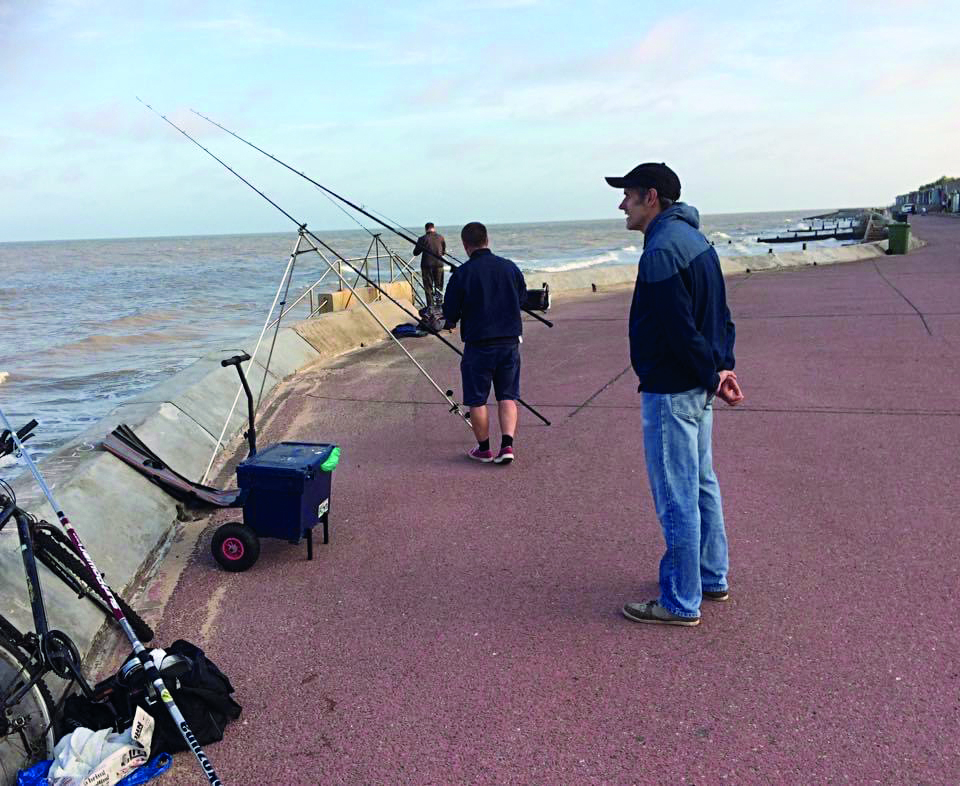
PETT LEVEL
Located to the west of Winchelsea beach in East Sussex, Pett Level marks the western end of the sea defence wall and where the Weald sandstone cliffs reach their eastern-most point.
The beach is mixed ground that fishes well after rough weather and can regularly produce flounders, silver eels and bass.
At Cliff End, the ground consists of boulders, shingle sand and mud. It is here that flounders work up the gullies on a flooding tide.
It’s always worth checking out the mark at low tide to discover where a carefully aimed cast can put your bait as the water floods.
Another option is to walk out over the reef and fish the turn of the tide at low water, where a long cast can find bass waiting to come in on the tide.
However, plan your route back across the beach because some sections consist of very sticky mud and people have been cut off by the tide.
During bigger tides lugworms can be collected on the flat sand towards Winchelsea.
Directly down from the beach club to Cliff End, there is a submerged ancient forest that gets exposed as the tide ebbs.
SEASONAL SPECIES
Fishing in spring produces silver eels, strap congers, dabs and plaice. The flatfish are more likely to be caught when fishing over the sand east at Winchelsea.
March can see some good numbers of dabs. In recent years smoothhounds have appeared, although they are small with occasionally larger fish of 5lb caught on squid.
Flatfish are caught in summer, while the hounds are prevalent too. Bass are caught on a variety of methods, such as float fishing or on lures during clearer conditions. Lugworms are good for bass all year. Soles are caught here too.
Autumn and winter heralds the whiting invasion. Strap congers to 6lb have been caught at Cliff End. Flounders can still be caught during the colder months.
TACTICS
Standard beach fishing tackle is all that’s required. Use two-hook cascade rigs for the cleaner ground. It is worth using a size 2/0 Pennell pulley for bass and hounds.
Breakout leads are effective in preventing the weights getting snagged. However consider using a four-ounce plain lead over those ancient trees.
Lugworms are best for bait, but razor clams and peeler crabs will catch particularly after strong winds.
During summer the beach can be busy but a short walk towards Cliff End will see more chance of finding some solitude. Alternatively, fish at night which can produce soles.
Although not necessary, distance casting can help you get your bait into fish-holding areas around troughs and on the fringes of the rocks.
It is not advisable to head past the rocks at Cliff End due to numerous rockfalls and the danger of getting cut off by the tide. Watch the tides here because it is easy to get off, particularly to the west at Cliff End.
A top time to fish is the start of flood when the tide hits the reef. Here a distance cast can be helpful for smoothhounds and plaice but a short lob is often all that is required to find the flounders. Bass and eels can be found in just a few feet of water.
Getting There
Pett, which is north-east of Hastings, can be reached from the Pett Level Road that runs between Cliff End to the west and Winchelsea further east.
Turn off the A259 coast road. There are parking spots, intermittently off this road but these can get busy during summer weekends.
TACKLE SHOP
Hastings Angling Centre, 33 The Bourne, Hastings, TN34 3AY, tel: 01424 432178.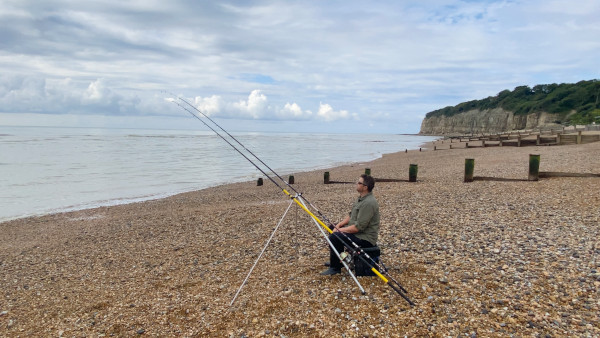
ORFORD NESS
Orford Ness shingle spit extends from Aldeburgh to North Wier Point. It is a steep beach where a short cast allows you to fish into deep water and a good tidal run.
The internationally important nature conservation site was once administered by the Ministry of Defence for secret military tests. Some of the distinctive buildings, such as the pagodas, still remain.
The river trip boat takes you from Orford Quay to the first drop-off point known as the Crouch. From here head straight across on the designated footpath to the beach.
The beach fishes well the whole way along from the pagodas all the way up to the Narrows on the right. Head one way or the other because it can be snaggy with lost gear directly in front of the walkway.
You can fish all tides here but the big springs are best avoided as the flow runs very quickly.
SEASONAL SPECIES
Early April to September produces smoothhounds, thornback rays, bass, dogfish, pouting and eels. Double-figure hounds are becoming more frequent catches.
Whiting seem to stay throughout the year, but the bulk are caught in winter, when there is a chance of one or two codling. Although not recognised as a flatfish venue, it can produce some very plump dabs in winter.
TACTICS
The area is relatively easy to fish. With deep water and a good tide most fish are caught between 40 to 80 yards.
Use a one-up, one-down rig with 20lb hooklengths and size 1 or 2 hooks. You’ll need a five or six-ounce grip lead.
Most people use a beachcaster with a four to six-ounce casting rating and a 6500-size multiplier loaded with 12lb-15lb mainline.
A minimum of 60lb leader is required for fishing six ounces into the tide.
Squid is an all-year bait here and catches most species. Whole squid will interest the rays and hounds. Tipping off a ragworm with a piece of squid attracts dogfish, while lug and squid is good for whiting and codling.
A long Pennell pulley rig with a whole squid sometimes picks out the bigger fish.
Getting There
From the M25, take the A12 past Colchester to Copdock roundabout. Turn right on to the A14 over the Orwell Bridge and rejoin the A12 eastbound at Seven Hills. Go past Martlesham and turn right at the roundabout on to the A1152 (Woods Lane).
Go straight ahead at the Melton traffic lights and left at the roundabout to the B1084 (Orford Road). Follow this road to Orford. There is a pay and display car park behind Orford Quay.
Before setting off on your journey, make sure you have booked your crossing with Oliver Page, of Regardless River Trips, tel: 07900 230579.
TACKLE SHOP
- Breakaway Tackle, 376 Bramford Road, Ipswich, IP1 5AY, tel: 01473 741393.
- Saxmundham Angling Centre, Back of Market place, Saxmundham, IP17 1AH, tel: 01728 603443.

ISLE OF SHEPPY
This island at the mouth of the River Thames offers sea anglers a number of varied and interesting venues to fish. Mainly a shallow water area, it has the potential to produce thornback rays, bass, flounders and mullet.
Being less than an hour from London, in summer it gets very busy with holidaymakers due to many caravan parks situated all over the island, so early or late tides give the best chance for anglers.
Local knowledge from a tackle shop or other anglers is beneficial.
The gently shelving beach at Minster has very good access for anglers with limited mobility because the parking is just behind the beach.
Other venues on the island include Barton, Warden’s Point, Leysdown, Eastchurch Gap and Shellness, with the ground being mud/broken rock and shallow water. Be aware that some access is restricted due to nesting birds in the Swale protection area.
SEASONAL SPECIES
Sheppey offers the visiting angler a wide choice of venues with mainly easy access, a good selection of species all year, particularly thornback rays, along with bass, flatfish, mullet, whiting and cod.
Many years ago the island was renowned for the eel fishing, with very large matches held. Sadly this fish is under extreme pressure and has become quite rare.
TACTICS
Weed can be a nuisance on larger tides, particularly at Minster, when the secret is to cast regularly to avoid the build-up of weed on your line. Thornback rays take fish baits and ragworms, with a mackerel/squid wrap favoured.
A Pennell pulley rig is useful to gain a few extra yards, while the three-hook flapper is ideal for scratching for other species. Some floating beads on the snoods may deter the nuisance crabs that will strip your hooks bare in record time.
It is these crabs that the better fish are foraging for, so they are nature’s groundbait.
All locations offer the opportunity to collect some bait that in season will include crabs, maddies (a local favourite for flounders, bass and mullet), ragworms and blow lug.
Be careful when doing this because there are some spots where the mud is dangerous and best avoided.
Getting There
From Dartford, take the A2 towards Gillingham to Farthing Corner, then on to the A249 toward Key Street and Howt Green before going over the Sheppey bridge on to the island.
From the west, use the M25 through Leatherhead toward Oxted and at Otford, taking the M26 toward Snodland. The M20 will take you to the A229 at Ditton and at Maidstone the A249 takes you over the bridge on to the island.
TACKLE SHOP
M&A Tackle, 31 High St, Sheerness, ME12 1NX, tel: 01795 581175.
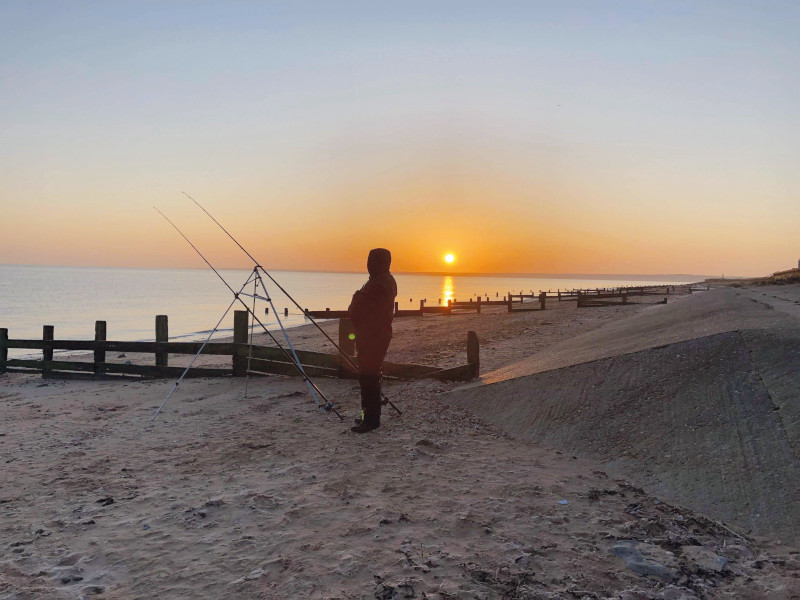
These beaches are both classed as fairly shallow and are renowned for their summer fishing, particularly for bass, with stingrays caught at St Osyth.
At Jaywick, there are long rock breakwaters which have become havens for bass, where fish of more than 10lb have been caught in recent years.
The St Osyth beaches, which are noted for stingrays and some big bass, begin with short breakwaters that stretch no more than 30 yards out to sea.
To the south, this opens up into a long shallow beach stretching to the Colne Point Nature Reserve.
SEASONAL SPECIES
Bass are mainly caught here in summer and autumn, but you can expect thornback rays throughout the year, and soles from May to October.
The stingrays turn up in early May and are caught until the end of June, although the odd one can be taken through to September.
Stingers in excess of 60lb are regularly caught around the Nature Reserve area. Autumn and winter see the whiting appear. There has been a demise in cod stocks and very few are caught from Jaywick.
Winter produces thornback rays from all the St Osyth beaches, along with dabs and whiting.
TACTICS
Bass can provide good sport on a light spinning rod matched with a suitable fixed-spool reel loaded with mono or braid. These bass seem to take most types of lures.
Dexter wedges or similar work well for casting that little bit further when needed, or surface poppers can make for exciting sport.
The bass tend to feed as the tide starts to flood and will continue to be caught until it eases. Once the ebb is running, they will feed again.
If you don’t fancy lure fishing, then a ragworm fished on a running leger on a size 1/0 hook will also catch bass.
Soles will take ragworm or lugworm baits after dark with just a 50-yard cast. Squid and bluey are the favoured baits for thornback rays.
On days when these rays are feeding further out, try a clipped-down rig with a sandeel bait whipped on tightly with elastic cotton.
Use ragworm baits when seeking the big stingrays, although in recent years calamari squid has also seen a few caught too.
The tide run here on the first of the ebb can be strong so six-ounce breakout leads are the minimum, but after the first couple of hours it is quite fishable again.
There is no need to cast too far when fishing for bass because most of the fish are feeding within 50 metres of the shoreline. A ragworm baited on a size 1/0 or 2/0 hook on a long flowing trace can be deadly.
Bait-robbing crabs can be a nuisance during the summer, especially with ragworm baits. A top tip here is to use elastic cotton to bind on all baits, which gives you a few extra minutes of fishing on each cast.
For the autumn whiting, use light tackle and a flapper rig with two or three hooks baited with fish or lugworms.
Expect some big bass to be chasing the whiting, so it is worth fishing a second rod with a big fish bait, such as half a mackerel or bluey, cast into the surf.
GETTING THERE
Take the A12 for Clacton-on-Sea. St Osyth village is two miles south-west of Clacton. Follow signs for Hutley’s caravan park, where there is a free car park adjacent to the Sailor Boy public house.
The beach is on the other side of the seawall. At St Osyth, it is a good 20-minute walk along the shoreline to reach the nature reserve.
TACKLE SHOPS
- Clacton Angling, 100 Pier Avenue, Clacton, CO15 1NG, tel: 01255 221863.
- Dean’s Tackle & Guns, 43 Pallister Road, Clacton, tel: 01255 425992.
- Meta-Lite Fishing Tackle, 15 Newgate Street, Walton-on-the-Naze, tel: 01255 675680.
- Toosey Tackle, Church Square, St Oysth, CO16 8NU, tel: 01255 820932.
